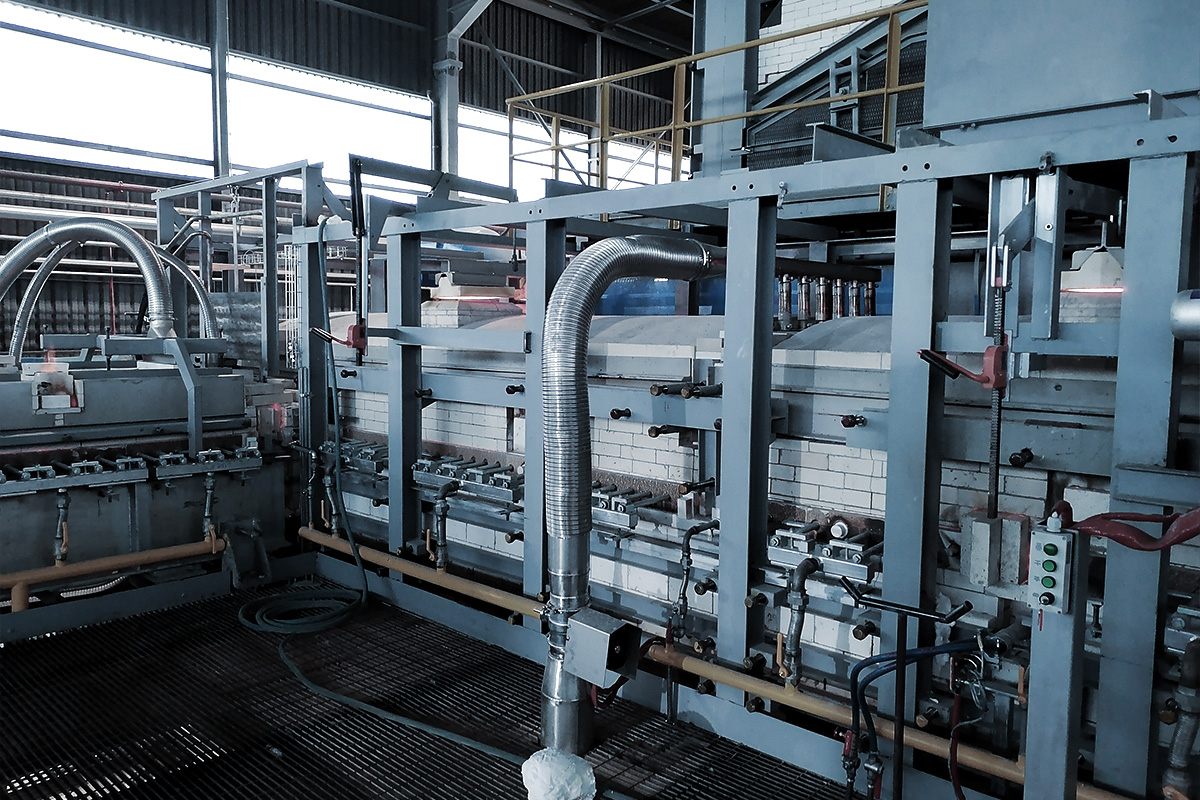Heat removal is carried out through the glass bath surface, and so a wide channel is advantageous wherever cooling is to be applied. A shallow bath depth eases heat transfer within the glass bath and also assists the cooling.
Direct air cooling is often used in the central area around the riser of SORG® STW distributors. In this area, glass temperatures are usually high enough to ensure that there is no risk of overcooling the glass at the sides of the channel, and so the complete roof area can be used for cooling. Open radiation cooling can be applied in the outer areas of distributors to remove as much energy as possible before the glass enters the forehearths. However, the flexible SORG® approach to cooling, involving all three cooling types, means that the best system can be chosen for each location to maximise the advantages and minimise any disadvantages.
ADVANTAGES
- High capacity heat removal
- Exact control of forehearth entry temperatures
CHARACTERISTICS
- All SORG® distributors utilise the VMC gas heating system
- Temperature measurement is typically done by immersed thermocouples installed vertically through the roof refractory
- The distributor is typically split up into several separate control zones. There will be one zone in the central area around the riser and one zone for each forehearth entry on a typical installation. Still, this arrangement may not be possible if the forehearth entries are unusually close together. In such a case, there may be two forehearth entries in one zone. Alternatively, if the forehearth entries are unusually far apart, it may be necessary to have an intermediate zone without a forehearth entry.
